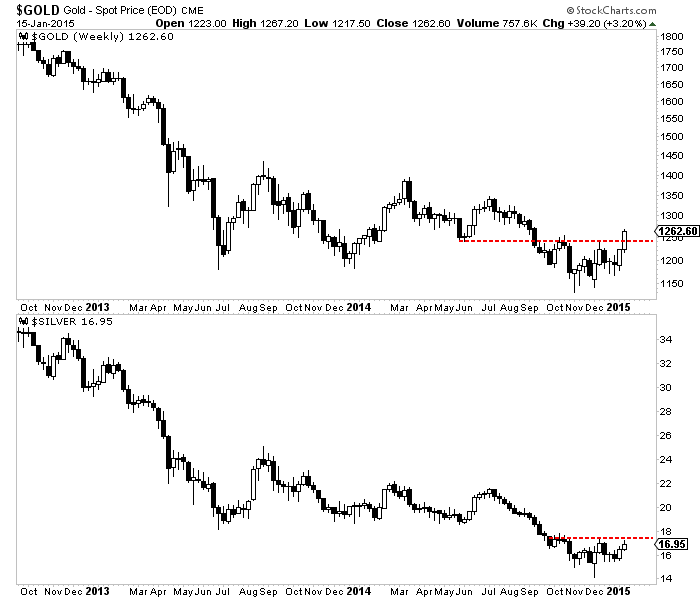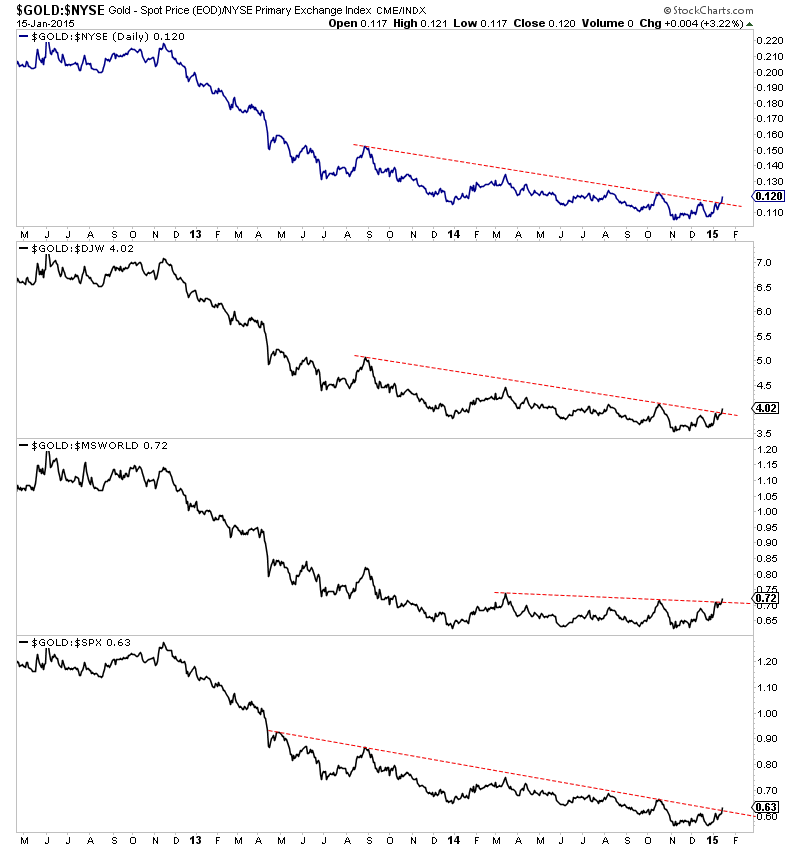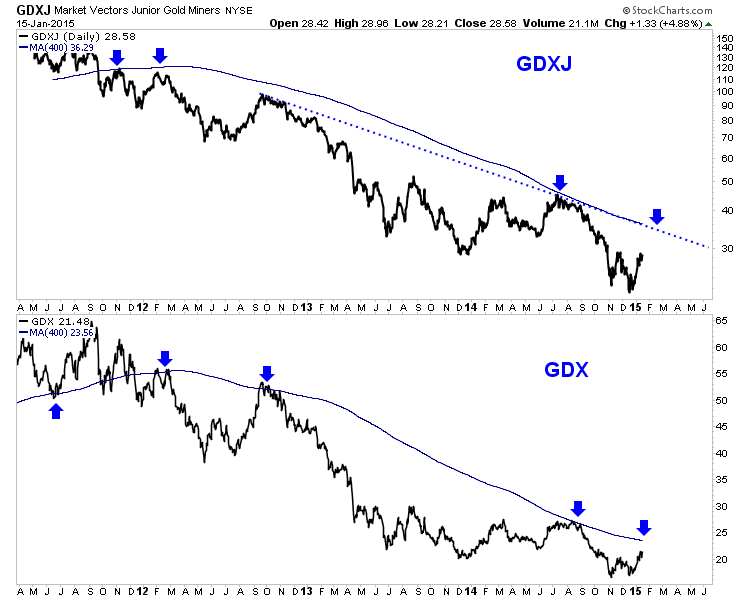Analysts Expect Gold To Remain Strong Ahead Of ECB Volatility
By Neils Christensen
Safe-haven
demand helped gold prices end the week at its highest level since
early September and according to most analysts, ongoing volatility
should continue to support gold in the upcoming shortened trading week.
Open floor trading of Comex February gold futures settled Friday at $1,276.90 an ounce, up $53.90 or 4.41% since Monday.
The strong move in gold also helped to drive up
silver prices as Comex March silver futures settled the week at
$17.750 an ounce, up $1.255 or 7.61% since the start of the week.

Although U.S. markets are closed Monday in
celebration of the Martin Luther King Jr. holiday, volatility will
likely pick up Tuesday where it left; analysts anticipate that markets
will continue to recover from the aftermath of the Swiss National
Bank’s sudden decision to discontinue the currency peg against the
euro, analysts said.
Traders and investors are also look
forvolatility to remain high as speculation surrounding Thursday’s
European Central Bank monetary policy meeting continues to grow.
“The rollercoaster ride is far from over… as
upcoming ECB QE will refocus the spotlight on the monetary policy
divergence themes, likely continuing to place stress on US markets as
global investors reposition,” said Gennadiy Goldberg, U.S. strategist
at TD Securities.
According to some analysts, markets have priced
in a 75% chance that ECB President Mario Draghi will announce an
expanded quantitative easing that include the purchase of sovereign
bonds.
Bill Baruch, senior commodity broker at
iiTrader, said the key will be in the details of the program, which he
added will probably disappoint the market’s high expectations.
“I think the risk is that the ECB
under-delivers. It is going to add uncertainty to the marketplace, and
gold is going to look attractive,” he said.
Although Baruch didn’t give a time-frame, he
said that with gold’s current momentum, he expects to see prices test
the next key psychological area of $1,300 an ounce.
“The path of least resistance for gold is higher,” he said.
Axel Merk, president and chief investment
officer of Merk Investments, said that nobody really knows what Draghi
is going to do and that uncertainty is going to help gold in the
near-term.
He added gold should still perform well after
Thursday’s meeting because markets will then focus on the Federal
Reserve’s monetary policy scheduled the following week on Jan. 28.
“The Fed has been fairly quiet with their
optimism. Everyone thinks they are going to move forward with a rate
hike but I’m not so sure,” he said. “Real interest rates are negative
right now and gold will do well in this environment. I am happy with my
gold positions.”
Ken Morrison, editor of online newsletter
Morrison on the Markets, said that he is not convinced that gold will
be able to maintain its momentum.
He added that the gold price has hit and taken
out his near-term target of $1,250 an ounce and that he would expect to
see some profit taking next week.
“If I were long gold at these levels, I would be looking at taking some of my profits off the table,” he said.
One of the reasons why gold has rallied is
because of the anticipation of looser monetary policies in Europe;
however, with the decision already priced in, he would expect to see a
sell-off on the actual event, Morrison added.
Turning to American markets, U.S. data reports
are relatively light until mid-week, with the release of housing data;
the week ends with an early view of the manufacturing sector, which
thanks to recent regional reports, is fairly mixed.
Looking at housing starts, which will be
released Wednesday, economists at Nomura said that they are on pace to
beat 2013 numbers but construction is still down by historical
comparison.
They add “there is still a long way to go in the housing market recovery.”





 19:39
19:39
 Unknown
Unknown







